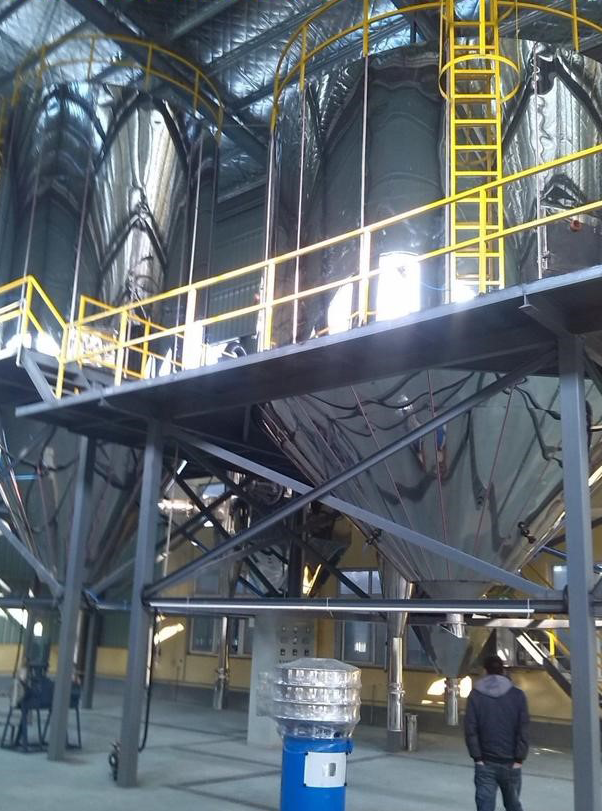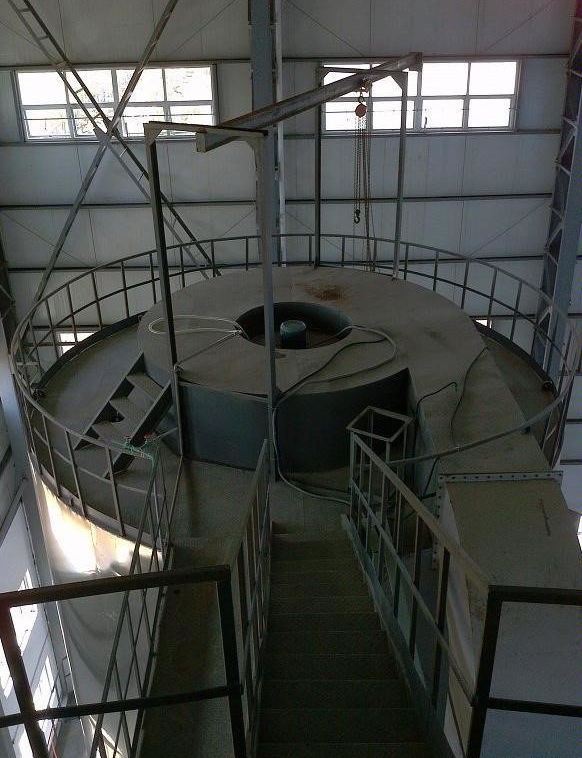Spray Dryer Production Process of Maltodextrin
Post on 2023-08-25
Maltodextrin, also known as enzymatic dextrin or water-soluble dextrin, is a novel, low-sweetness, low-calorie and high-nutrition raw material for food. It takes starch or starch agricultural products such as corn and potato as raw materials and is converted by amylase to a low degree into a class of pure carbohydrates between starch and sugar. Its glucose value (DE value) is lower than 20, and only contains a lot of polysaccharides.
There are three production processes of maltodextrin: acid method, acid enzyme method and enzyme method. Among them, the acid method is difficult to filter, the solubility of the product is poor, the acid-enzyme method is better, but it is not suitable for direct use of starch bearing materials (such as corn and potato), the enzymatic process is most suitable. The production process is: starch → pulping → first liquefaction → high temperature enzyme removal → second liquefaction → enzyme removal and decolorization → filtration → ion exchange → concentration → spray drying → product.
The process points are as follows:
(1) Starch blending and gelatinization
Because the crystalline structure of starch particles is resistant to enzyme action, the enzyme can not directly act on the starch, so the starch is adjusted into 30-32% starch milk with hot water first, and the starch is fully absorbed and expanded and gelatinized. At the same time, adjust the pH value to 6.2-6.4 and add 0.5-1.0% calcium chloride to improve the heat resistance of amylase.
(2) Conversion (liquefaction)
This is the key process of the production of maltodextrin, because maltodextrin is a starch conversion product, the DE value is controlled between 10-20, the viscosity is high, if the liquefaction control is not good, it will bring many difficulties to the latter process, resulting in low yield and poor product quality. To this end, the starch slurry is first converted to DE value 2-5 with α-amylase, rapidly heated to 140℃, the protein impurities condense, the temperature is lowered to 88-90℃, and then the enzyme is converted to the required DE value, so that the conversion liquid has good filtration properties.
(3) Refined
① filtration: the sediment in the above conversion liquid is filtered by filter press, and generally can be used as a filter aid such as diatomaceous earth to speed up the filtration speed. This process removes impurities such as fibers, proteins and lipids to obtain a clarified filtrate.
② decolorization: the filtrate is purified with activated carbon, the amount of activated carbon is about 0.5% of the dry matter of the filtrate, the decolorization capacity of activated carbon is basically the same in the range of pH4-6 different pH values, and the color of the decolorized sugar solution is increased less under the lower pH value, so the decolorization operation can adjust the pH value to 4.5-5.0. The decolorization temperature is generally 80℃ and maintained for 30 minutes.
③ Separation: In order to further improve product quality, the salt is removed with ion exchange resin.
(4) Evaporation (Concentration)
In the vacuum evaporation tank, the standard evaporation tank can be used for initial steaming or direct concentration to 76% of the concentrated liquid.
(5) Spray drying
A better method is to purify the initial distillation of maltodextrin concentrated liquid by heat exchanger heating to 110℃, with high pressure pump through the nozzle into the drying chamber and 150-200℃ hot air contact drying to less than 3% moisture content, white powder, this product is easily soluble in water, high transparency.
(6) The finished product packaging
It can be packed in double-layer food plastic bags or double-layer kraft paper bags with moisture-proof layers.
The hydrolysis process of maltodextrin makes starch molecules from large to small, which is actually a mixture of maltose, fructose, dextrin and so on. Because the dextrin proportion is large, the glucose value is relatively reduced, so it is featured by weak sweet, strong thickening, and small fermentation. Therefore, maltodextrin has the following characteristics: good solubility, soluble in water, so the beverage can be used as a thickening agent to improve the viscosity of the beverage; Low moisture absorption, especially the production of powder, granular solid drinks (including flavor soup) is not easy to absorb moisture, not easy to caking; Reducing sugar is weak, which can reduce the Browning of food processing. Good fluidity, easy to store, easy to mix evenly; Good film formation and foam stability, can give a certain form and viscosity of food, and can inhibit the crystallization of sugar; Strong digestion and absorption, suitable for patients, infants, athletes food, suitable for coronary heart disease, obesity, sclerosis and other patients with low heat efficacy food.

